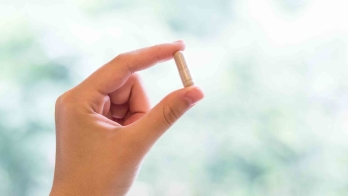The best foods and longevity supplements to improve your healthspan
Looking for the secret to longevity? Incorporating these nutrients into your diet can help you live a long, healthy life. Here are the top science-backed foods and longevity supplements to help improve your healthspan.

Aging. It happens to everyone, yet few of us are truly comfortable with getting older. While no single food will add years to your life, eating a balanced, nutrient-dense diet filled with fiber, vitamins, and antioxidants can help you stay on top of your health and look and feel your best year after year. But could supplements also help extend your life and improve your healthspan?
Here’s what science has to say about foods and supplements that can increase longevity and keep you looking (and feeling) youthful. But before we get started, let’s first examine what longevity and healthspan mean so we can better understand how nutrition plays a role.
Healthspan and longevity definition
According to experts, longevity describes the ability to live a long life beyond the average lifespan, whereas healthspan is defined as the length of time that someone is healthy—not just alive [ 1

Personalized longevity supplements with Elo Health
Your longevity relies on much more than just good genetics– the right nutrition also plays an important role in improving your healthspan.
At Elo Health, we offer 1:1 dietitian support with our Elo Health coaches
Elo also provides personalized Smart Gummies
Get your custom gummies today!
Learn more about the best science-backed supplements to include in your
longevity health plan
.
The best foods to improve your healthspan
Studies continue to show that what you put on your fork can make a significant impact on your healthspan and longevity. But in addition to longevity supplements, what else can you do to improve the odds of reaching triple digits?
To answer this question, we have turned to science to unveil the best anti-aging foods. From curcumin to magnesium, here are some of the best foods to consider adding to your diet.
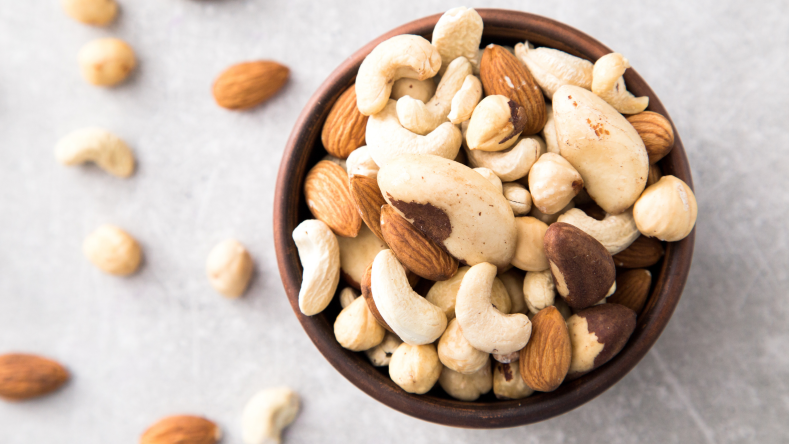
Nuts
Whether you enjoy cashews, walnuts, or almonds, these nutrient-dense morsels are packed with healthy fats, protein, and fiber, which promote heart health, satiety, and laxation. Eating nuts regularly has been shown to reduce the risk of obesity, hypertension, diabetes, and cardiovascular disease - the latter of which is the leading cause of death in adults in the United States [ 2
In addition, recent evidence has shown that consuming an additional 5 g of nuts/day is associated with 6% and 25% lower risks of pancreatic and colon cancers, respectively, and a 4% lower risk of overall cancer mortality [ 3
And while nuts, in general, have a variety of longevity benefits, we can take a closer look at a few different nuts to see what they have to offer.
For example, almonds have been shown to improve glycemic control and insulin resistance, raise HDL (“good”) cholesterol, and support weight loss [ 2 4 2
To reap these health benefits, enjoy nuts raw or roasted, blended into nut butter, or sprinkled on cereal for a crunchy, nutritious snack.
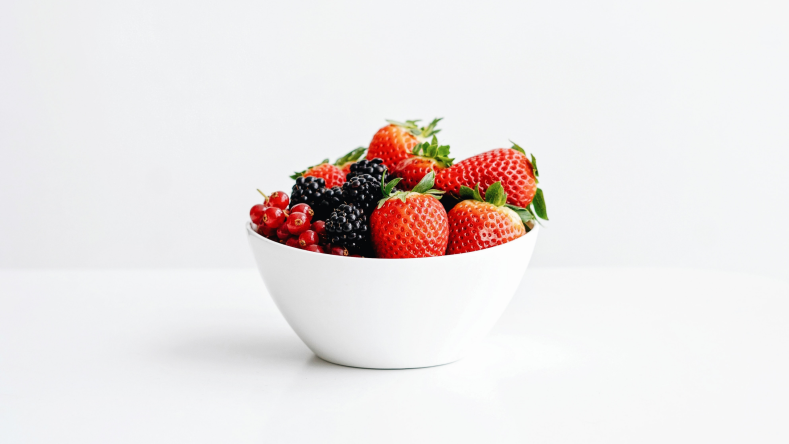
Berries
Don’t be shy about eating the rainbow. Blueberries, strawberries, raspberries, blackberries, and cranberries are powerful nutrient gems that are low in calories and rich in antioxidants, vitamins, minerals, fiber, and other bioactive compounds to fight inflammation [ 5 6
Emerging evidence further suggests that the bioactive compounds in berries help protect against chronic diseases (such as cardiovascular disease, cancer, Alzheimer’s, and other disorders) and improve your healthspan [ 6
Other health benefits include:
Vitamin C (found in blueberries and strawberries) can regulate collagen development, helps skin remain firm, and may decrease skin wrinkling [
5
,6
,7
]. Conversely, reduced collagen production can result in saggy skin and increased wrinkles [8
].Positive impact on insulin sensitivity, oxidative stress, and inflammatory markers [
6
].Decreased systolic blood pressure (found with increased strawberry consumption) [
6
].
Get vitamin C in your
Elo Smart Gummies
.

Cruciferous vegetables
Broccoli, cauliflower, brussels sprouts, kale, and cabbage are all members of the cruciferous vegetable family, a class of veggies that may help protect against various chronic diseases.
Sulforaphane is present in broccoli, cabbage, and cauliflower and has been shown to have antioxidant and antitumor properties [ 9 10 11
So, go ahead and get cooking with cruciferous veggies to promote longevity. From soups and salads to stir-fries and smoothies, there are dozens of tasty options to include on your menu.
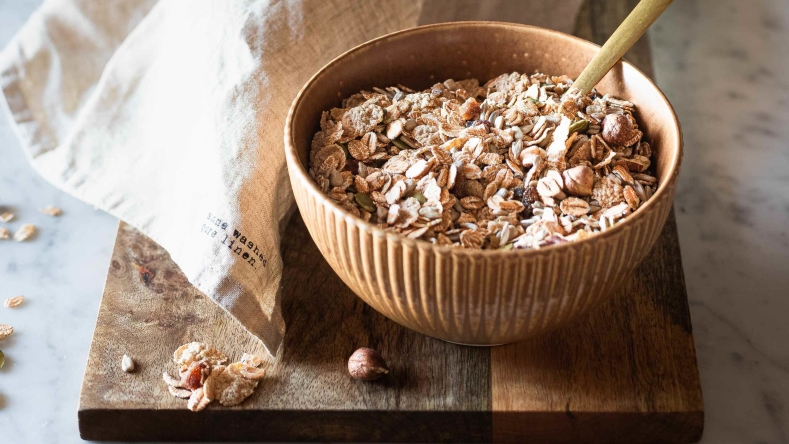
Whole grains
Studies have found a correlation between fiber consumption and all-cause mortality, as a high-fiber diet is associated with lower concentrations of serum inflammatory biomarkers [ 12 13
For heart health benefits, aim to eat 30-40 g of fiber-rich foods per day, 5-10 g of which should come from soluble fiber [ 13 14
Learn more about how to reduce your LDL cholesterol levels without medication
here
.
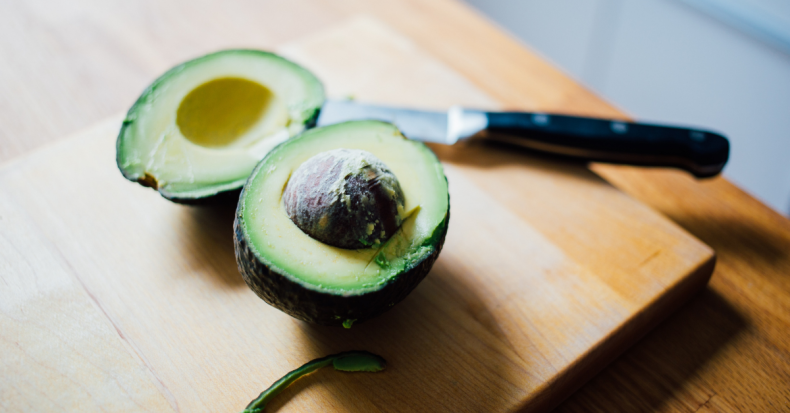
Avocados
Avocados are packed with fiber, monounsaturated fatty acids, vitamins K and E, potassium, and magnesium, all of which support cardiovascular health, weight management, and healthy aging [ 15
Furthermore, studies have shown that eating avocados can help lower LDL (“bad”) cholesterol, improve glycemic control, and reduce the risk of metabolic syndrome, making them a delicious option to increase longevity and promote youthfulness [ 16 17 18
Get vitamin E in your
Elo Smart Gummies
.
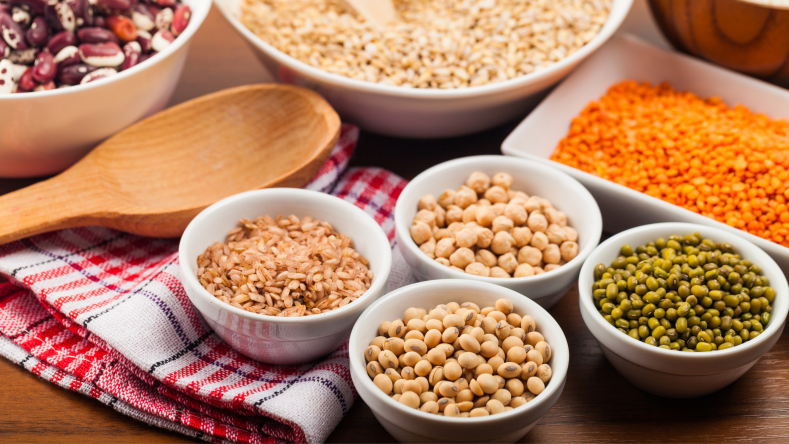
Beans and legumes
Beans and legumes (such as chickpeas, lentils, kidney beans, and black beans) are nutrient powerhouses that may help protect against colon cancer, diabetes, and heart disease, all of which can contribute to increased mortality [ 19 19
You can enjoy these little morsels in soups, stews, salads, skillets, and even desserts.
Summary
As you age, it’s important to pay closer attention to nutrients that promote a long, healthful life. Eating a balanced, nutrient-dense diet filled with nuts, berries, cruciferous vegetables, whole grains, beans, and avocados can help you offset your risk of chronic disease, manage weight, boost skin health, and prevent nutrient deficiencies.
Disclaimer: The text, images, videos, and other media on this page are provided for informational purposes only and are not intended to treat, diagnose, or replace personalized medical care.
Key takeaways
While there is not yet a fountain of youth, eating a balanced, nutrient-dense diet filled with fiber, vitamins, and antioxidants is one of the best ways to live a longer, healthier life.
Eating nuts regularly has been shown to reduce the risk of obesity, hypertension, diabetes, cardiovascular disease, pancreatic and colon cancers, and overall cancer mortality.
Berries are rich in antioxidants, vitamins, minerals, fiber, and other bioactive compounds that promote longevity, reduce inflammation, and improve collagen levels.
High intakes of cruciferous vegetables can reduce the risk of colorectal and gastric cancers by 8 and 19%, respectively.
Avocados can help lower LDL (“bad”) cholesterol, improve glycemic control, and protect against DNA damage due to their high levels of monounsaturated fatty acids and antioxidants.
Beans and other legumes are nutrient powerhouses rich in soluble fiber, protecting you against colon cancer, diabetes, and heart disease.
Elo
Smart Gummies
are personalized gummy vitamins to match your unique nutrition needs and improve longevity.
References
What do the terms life expectancy, lifespan, longevity and health span mean?. Max Planck Institute for Biology of Ageing. (n.d.).
https://www.age.mpg.de/what-do-the-terms-life-expectancy-lifespan-longevity-and-health-span-mean
De Souza, R., Schincaglia, R., Pimentel, G., & Mota, J. (2017). Nuts and human health outcomes: A systematic review. Nutrients, 9(12), 1311.
https://doi.org/10.3390/nu9121311
Naghshi, S., Sadeghian, M., Nasiri, M., Mobarak, S., Asadi, M., & Sadeghi, O. (2021). Association of total nut, tree nut, peanut, and peanut butter consumption with cancer incidence and mortality: A comprehensive systematic review and dose-response meta-analysis of observational studies. Advances in Nutrition, 12(3), 793–808.
https://doi.org/10.1093/advances/nmaa152
Pahlavani, N., Rostami, D., Ebrahimi, F., & Azizi-Soleiman, F. (2020). Nuts effects in chronic disease and relationship between walnuts and satiety: Review on the available evidence. Obesity Medicine, 17, 100173.
https://doi.org/10.1016/j.obmed.2019.100173
Skrovankova, S., Sumczynski, D., Mlcek, J., Jurikova, T., & Sochor, J. (2015). Bioactive compounds and antioxidant activity in different types of berries. International Journal of Molecular Sciences, 16(10), 24673–24706.
https://doi.org/10.3390/ijms161024673
Miller, K., Feucht, W., & Schmid, M. (2019). Bioactive compounds of strawberry and blueberry and their potential health effects based on Human Intervention Studies: A brief overview. Nutrients, 11(7), 1510.
https://doi.org/10.3390/nu11071510
Cosgrove, M. C., Franco, O. H., Granger, S. P., Murray, P. G., & Mayes, A. E. (2007). Dietary nutrient intakes and skin-aging appearance among middle-aged American women. The American Journal of Clinical Nutrition, 86(4), 1225–1231.
https://doi.org/10.1093/ajcn/86.4.1225
Ganceviciene, R., Liakou, A. I., Theodoridis, A., Makrantonaki, E., & Zouboulis, C. C. (2012). Skin anti-aging strategies. Dermato-Endocrinology, 4(3), 308–319.
https://doi.org/10.4161/derm.22804
Ferreira, P. M. P., Rodrigues, L. A. R. L., de Alencar Carnib, L. P., de Lima Sousa, P. V., Nolasco Lugo, L. M., Nunes, N. M. F., do Nascimento Silva, J., da Silva Araûjo, L., & de Macêdo Gonçalves Frota, K. (2019). Cruciferous vegetables as antioxidative, chemopreventive and Antineoplasic functional foods: Preclinical and clinical evidences of sulforaphane against prostate cancers. Current Pharmaceutical Design, 24(40), 4779–4793.
https://doi.org/10.2174/1381612825666190116124233
Zurbau, A., Au-Yeung, F., Blanco Mejia, S., Khan, T. A., Vuksan, V., Jovanovski, E., Leiter, L. A., Kendall, C. W. C., Jenkins, D. J. A., & Sievenpiper, J. L. (2020). Relation of Different Fruit and Vegetable Sources With Incident Cardiovascular Outcomes: A Systematic Review and Meta-Analysis of Prospective Cohort Studies. Journal of the American Heart Association, 9(19), e017728.
https://doi.org/10.1161/JAHA.120.017728
Johnson, I. T. (2018). Cruciferous vegetables and risk of cancers of the gastrointestinal tract. Molecular Nutrition & Food Research, 62(18).
https://doi.org/10.1002/mnfr.201701000
Raj Krishnamurthy, V. M., Wei, G., Baird, B. C., Murtaugh, M., Chonchol, M. B., Raphael, K. L., Greene, T., & Beddhu, S. (2012). High dietary fiber intake is associated with decreased inflammation and all-cause mortality in patients with chronic kidney disease. Kidney International, 81(3), 300–306.
https://doi.org/10.1038/ki.2011.355
Adding soluble fiber to lower your cholesterol - lipid. (n.d.).
https://www.lipid.org/sites/default/files/adding_soluble_fiber_final_0.pdf
Surampudi, P., Enkhmaa, B., Anuurad, E., & Berglund, L. (2016). Lipid lowering with soluble dietary fiber. Current Atherosclerosis Reports, 18(12).
https://doi.org/10.1007/s11883-016-0624-z
Dreher, M. L., & Davenport, A. J. (2013). Hass avocado composition and potential health effects. Critical Reviews in Food Science and Nutrition, 53(7), 738–750.
https://doi.org/10.1080/10408398.2011.556759
Wang, L., Tao, L., Hao, L., Stanley, T. H., Huang, K. H., Lambert, J. D., & Kris-Etherton, P. M. (2020). A Moderate-Fat Diet with One Avocado per Day Increases Plasma Antioxidants and Decreases the Oxidation of Small, Dense LDL in Adults with Overweight and Obesity: A Randomized Controlled Trial. The Journal of nutrition, 150(2), 276–284.
https://doi.org/10.1093/jn/nxz231
Zhang, X., Xiao, D., Guzman, G., Edirisinghe, I., & Burton-Freeman, B. (2022). Avocado consumption for 12 weeks and cardiometabolic risk factors: A randomized controlled trial in adults with overweight or obesity and insulin resistance. The Journal of Nutrition, 152(8), 1851–1861.
https://doi.org/10.1093/jn/nxac126
Fulgoni, V. L., Dreher, M., & Davenport, A. J. (2013). Avocado consumption is associated with better diet quality and nutrient intake, and lower metabolic syndrome risk in US adults: Results from the National Health and Nutrition Examination Survey (NHANES) 2001–2008. Nutrition Journal, 12(1).
https://doi.org/10.1186/1475-2891-12-1
Mullins, A. P., & Arjmandi, B. H. (2021). Health benefits of plant-based nutrition: Focus on beans in cardiometabolic diseases. Nutrients, 13(2), 519. https://doi.org/10.3390/nu13020519



